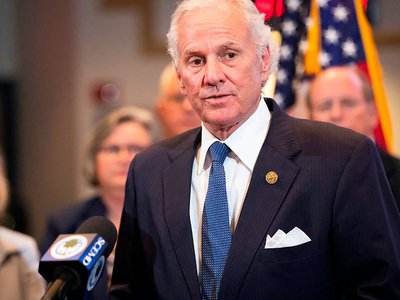Republican governors have taken the lead in strengthening their states’ workforces and helping workers displaced by the COVID-19 pandemic find good-paying jobs. Across the country, governors are putting pro-growth policies in action by creating broad skills training programs and responsibly distributing funds to workforce development.
In a time of unprecedented economic challenges due to coronavirus-related closures, Republican governors are carefully balancing public health and economic wellbeing to keep working families safe and guide their states toward recovery. A crucial component of recovery plans is helping workers who have lost jobs or income due to the pandemic find new – and in many cases, better – opportunities to thrive.
Here’s how Republican governors are continuing their commitment to supporting America’s workforce:
Indiana Governor Eric Holcomb expanded his successful Next Level Jobs program through the state’s new Rapid Recovery for a Better Future initiative and leveraged $40 million to expand funding for the program’s two grants. Next Level Jobs’ Workforce Ready Grant reimburses Hoosiers with two- and four-year degrees for eligible job programs, and the Employer Training Grant aids employers in training new employees and upskilling or reskilling current employees.
Governor Kim Reynolds of Iowa has continued to build on her Future Ready Iowa initiative for two years and has connected thousands of Iowans to scholarships and career opportunities as a result. Her comprehensive workforce program is set to secure education or training beyond high school for 70% of Iowans by 2025.
In Maryland, Governor Larry Hogan has set aside $10 million in CARES Act funds for workforce development programs in the state’s community colleges. Thanks to this new boost, Maryland community colleges will expand current training programs and create programs for in-demand sectors following COVID-19.
Governor Charlie Baker added to his long-standing support of job training in Massachusetts by directing funds to the state’s Community Development Block Grant (CDBG) program for health care workers and technicians. Increased training for these essential workers is covered in the governor’s recently allocated $19.6 million to the CDBG.
As Mississippi swiftly rebounds to economic recovery, Governor Tate Reeves declared his plan to invest even more money into workforce training in the Magnolia State and installed strong, new leadership in the State Workforce Investment Board to see through his modernized proposals. Governor Reeves is especially focused on raising wages for Mississippians through on-the-job training with businesses and job training centers at community colleges.
Missouri Governor Mike Parson recently distributed a substantial $125 million of CARES Act funds to the state’s Department of Higher Education and Workforce Development. Support for workforce development and job training are being allocated to Missouri Job Centers, the Return Strong program, job training programs for key sectors like IT, and the Fast Track Workforce Incentive Program.
One of Governor Pete Ricketts’ four main areas of focus when spending Nebraska’s CARES Act allotment was creating additional training programs for the unemployed and underemployed in the state. Governor Ricketts knew from the start how to invest federal COVID-19 aid for responsible growth and increased scholarship opportunities for Nebraskans to receive training in high-demand jobs.
This week, Governor Kristi Noem of South Dakota launched UpSkill, a job training program designed for workers displaced by the COVID-19 pandemic. Governor Noem is helping South Dakotans return to work by completing certificate programs at the state’s technical colleges for little to no cost.
In Tennessee Governor Bill Lee’s latest distribution of relief funds, he committed $150 million to non-profits in the Volunteer State to cover a variety of needs, including workforce training. Governor Lee is protecting Tennessee’s most vulnerable families who have experienced a loss of income or economic insecurity due to the Coronavirus and recognizes that a skilled workforce is key to bouncing back.
Governor Greg Abbott of Texas recently announced a massive $118 million investment into higher education efforts to give Texans the skills and credentials they need to enter the workforce. Governor Abbott had the future of Texas in mind when he set aside $46.5 million for upskilling and reskilling displaced workers, $46.5 million for families hard-hit by the pandemic to keep students enrolled, $15 million for strategic education and workforce data infrastructure, and $10 million to improve and reduce the costs of online learning.
In Utah, Governor Gary Herbert is doing his part to assist workers displaced by the pandemic by implementing a new program: Learn & Work in Utah. Under his initiative, Utahns can utilize training programs at higher education institutions to develop their careers and become engaged in the workforce once again. Governor Herbert has also directed Utah’s Department of Workforce Services to create a dashboard of unemployment and job opening trends to connect workers to new jobs.
Republican governors understand how valuable a robust workforce is to a thriving economy, and they have taken widespread action in their states to prove it. New job training programs and CARES Act funds distributed to workforce development efforts are boosting economic comebacks in Republican-held states across the country and ensuring long-term growth ahead to rebound even stronger than before.






